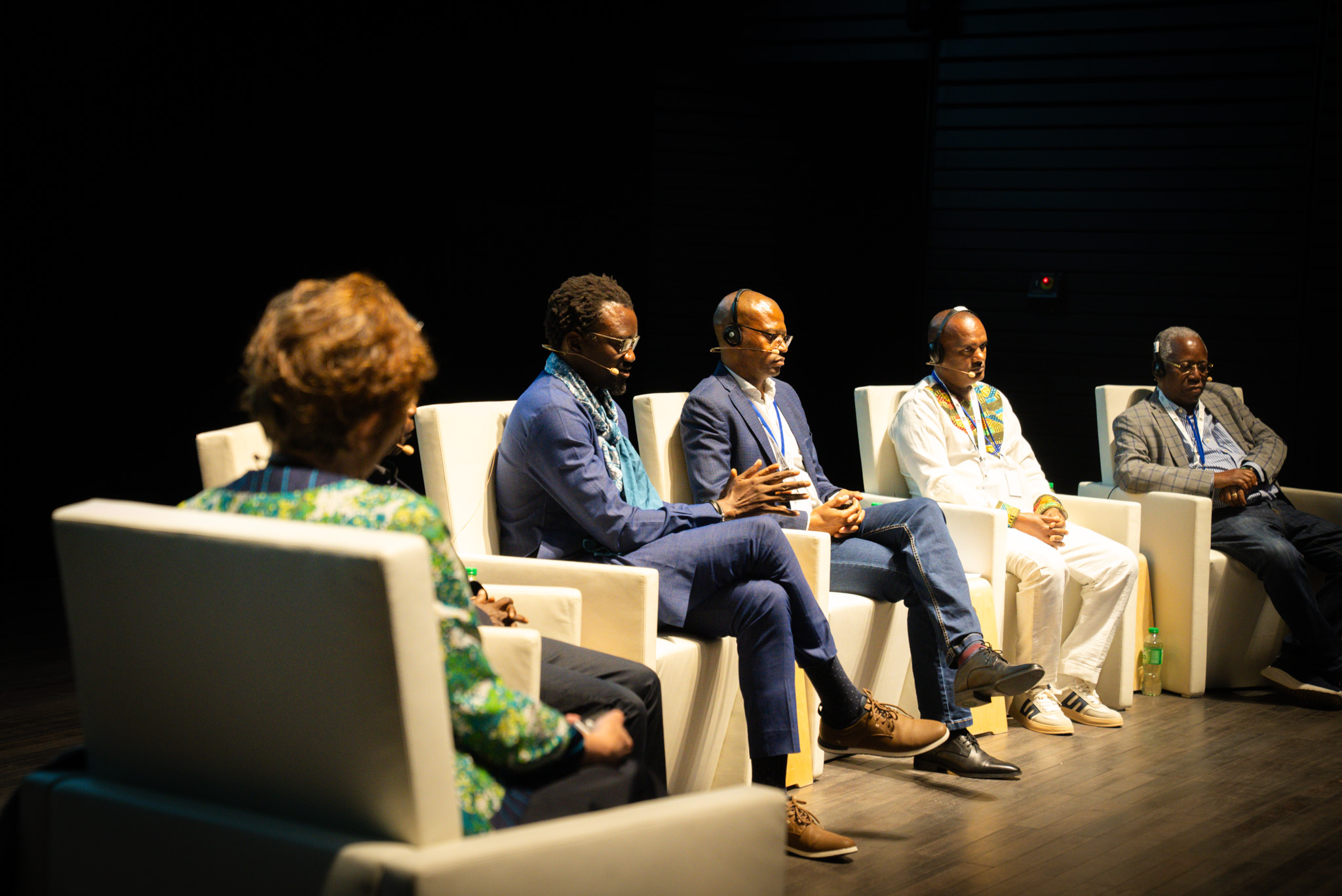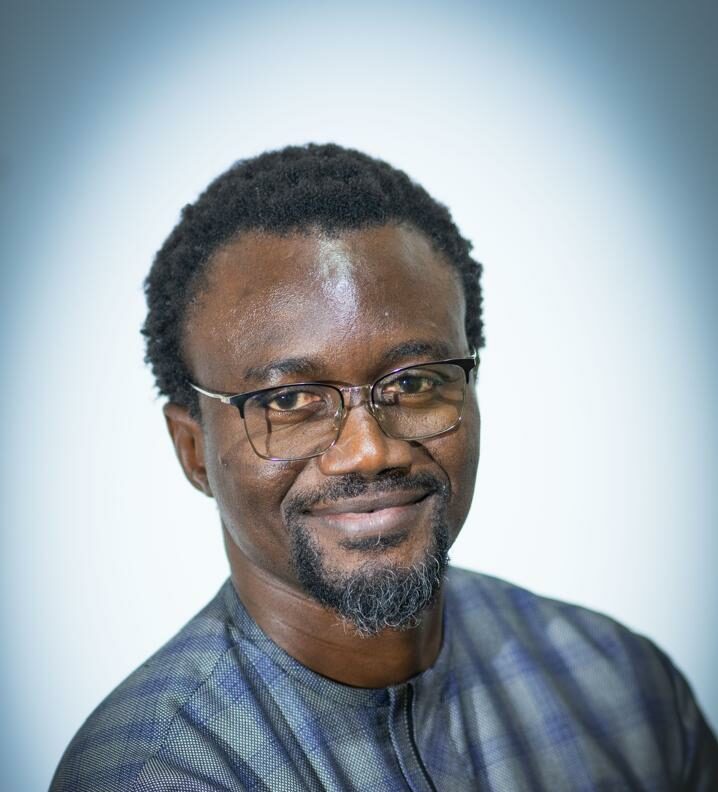Interview – Re-enchanting heritage with Malick Ndiaye
Interview 1/6: “Re-enchanting heritage” with Malick Ndiaye
France Muséums had the honour to work with Louvre Abu Dhabi and produce the conference African Museums: Today and Tomorrow, held at Louvre Abu Dhabi, 28–30 January 2025.
The event brought together close to 25 African institutions and professionals from around the world to discuss the prospects and challenges faced by the continent’s museums. It provided an opportunity for reflection and a platform for museum directors, academics and artists to exchange views on the key topics they are confronted with: the redefinition of narratives, the place of the younger generations, the transformation of museums and the evolution of their forms and roles.
In order to extend these discussions beyond the conference, we wanted to give the floor to the speakers through a series of interviews.
This first discussion welcomed El Hadji Malick Ndiaye, Head of the Museums Department and Curator of the Musée Théodore Monod d’Art Africain IFAN-CAD, in Dakar.
For France Muséums, he reflected on the importance of narration in the context of museums.
Could you give a brief description of your institution and the changes that you have made in recent years?
The history of the Théodore Monod Museum building dates back to the 1930s: initially used as the headquarters of the governor of the Dakar district during the era of French West Africa (AOF), the building was then allocated to the Institut Français d’Afrique Noire (IFAN), later renamed the Institut Fondamental d’Afrique Noire. In 1961, the building was fully given over to housing the Théodore Monod African Art Museum.
Today, the museum has a collection of nearly 9000 objects from the Senegalese and African heritages and is dedicated to preserving and promoting the cultural heritage of Senegal and Africa as a whole.
This objective has prompted us to reinterpret the narrative of these objects, and to explore new forms of storytelling alongside artists and cultural professionals in Senegal and Africa as a whole, so that these objects may harmonise with contemporary society and its issues.
Our approach has led to renewed interest in the museum, both from the community and from local and international cultural partners. We are now in a position to forge a number of partnerships on all five continents, with artists and institutions as diverse as the Senegalese Ministry of Culture, several museums throughout Africa, The Metropolitan Museum of Art in New York, the Musée du quai Branly – Jacques Chirac, the National Museum of African American History and Culture in Washington, UNESCO, the Volkswagen Foundation, the Goethe-Institut, the Gerda Henkel Foundation, the Italian Cultural Institute, the Institut Français, and the Réunion des Musées Nationaux – Grand Palais for digital projects, among others.
This year, we are presenting two exhibitions: the first, Réenchanter nos vies, which was created in partnership with the Musée du quai Branly – Jacques Chirac, opened in February; the second, which will follow in May, will be organised in association with the Italian Cultural Institute.
How can the reinterpretation and reappropriation of collections by artists and members of the local cultural scene transform narratives and renew the museum?
It was important that the Théodore Monod Museum rethought its collections so that they would appeal to the imagination of contemporary society, as the museum had become a phantasmal place, a “prison” for the objects, and a deterrent to the population outside the institution.
Artists look at heritage as being something outside the methodological, scientific and standardised approach of art historians or curators. They are constantly reinventing the world through their own eyes, daring to engage with anachronism and blurring temporal boundaries.
Far from rejecting the essential work of traditional interpretation, we have undertaken to partner with these artists as mediators and to co-create something new, with the goal of updating the narrative of the objects, of reassessing them, and of reinserting the museum in the social fabric.
Let me give you an example. In 2023, we organised a performance in the museum, in which an artist, playing the role of a spiritual guide from the traditional Serer people , reintroduced me – the curator – to objects from which I had become distant on account of my education and scientific standpoint. The objective was to symbolically ‘reconcile’ traditional and modern societies through the intermediary of an artist.
This approach has allowed us to re-enchant our heritage for present and future generations, and to transform the museum into a space for the living rather than it being a container for inanimate objects. More than just a cultural venue, the Théodore Monod Museum has become the vehicle for a social project.
During the CONFERENCE, you referred to the concept of an experimental museum. Can you tell us more about that?
Experimentation means daring to do something that has not previously been attractive or the norm, and thinking outside the box. To bring our heritage into the present and give it a place in today’s world, we worked on our collections so that they could be reconnected with different audiences.
For example, we wanted to compare Dogon cosmogonic understanding with current astronomical knowledge. To do so, we organised introductory sessions to astronomy and night sky observation sessions with telescopes.
It also seemed essential to make the objects accessible to our visitors’ subjective interpretation, without art critics or curators to guide them. This prompted us to take the objects out of their display cases and exhibit them outdoors (for short periods), within easy reach of visitors so that they could interact with them at will. Along the same lines, we also created an exhibition without explanatory labels, thereby raising the issue of the anonymity of the artists who created the works held in the museum.
An experimental museum is a space where we first unlearn and then dare to explore the world.
Why are these spaces for dialogue, like the Abu Dhabi conference, so important?
It is very encouraging that such an event has taken place, as it opens the door to strengthening cultural cooperation. Meeting cultural actors with whom we have few partnerships but have much in common opens up new prospects and avenues for collaboration. Exchanging ideas allows us to rethink our approach to museums.
The discussions were stimulating, and many ideas for partnerships emerged as a result.
To learn more about the conference produced by France Muséums for Louvre Abu Dhabi


